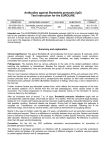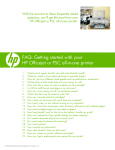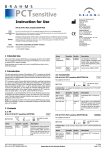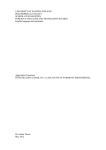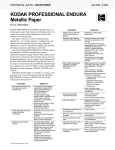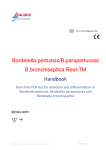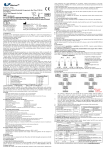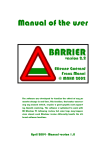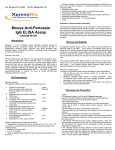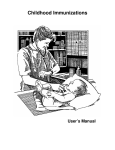Download Antibodies against Bordetella pertussis (IgA) Test instruction for the
Transcript
Antibodies against Bordetella pertussis (IgA) Test instruction for the EUROLINE For In Vitro Diagnostic Use CLIA Complexity: High ORDER NO. ANTIBODIES AGAINST IG-CLASS SUBSTRATE FORMAT DN 2050-1601 A DN 2050-24001 A Bordetella pertussis antigens: FHA, PT and ACT IgA Ag-coated immunoblot strips 16 x 01 (16) 240 x 01 (240) Intended use: The EUROIMMUN EUROLINE Bordetella pertussis (IgA) kit is an immune lineblot strip test for the qualitative detection of IgA class antibodies against Bordetella pertussis antigens: FHA, PT and ACT in human serum and plasma (EDTA, Li-heparin, Citrate). Detection of these antibodies is used as an aid in the diagnosis of infections with Bordetella pertussis in conjunction with other laboratory and clinical findings. Summary and explanation Clinical significance: The genus Bordetella (B.) encompasses four known species: B. pertussis, which causes whooping cough, B. parapertussis, which causes a mild whooping cough syndrome, B. bronchiseptica and B. avium. They are distributed worldwide, are highly contagious and are transmitted from person to person by droplet infection. Pathogenesis: The bacteria bind via various adhesins to the cells of the ciliated epithelium without reaching the epithelium or bloodstream. Besides the capsule, which protects the pathogen from inactivation by complement, there are functionally two groups of virulence factors: adhesins and toxins. Adhesins and toxins: The two most important adherence factors are filament haemagglutinin (FHA) and pertussis toxin (PT), which can function as an exotoxin or as an adhesin. In contrast to B. pertussis, B. parapertussis does not produce pertussis toxin. B. pertussis and B. parapertussis also possess on their outer membranes the membrane toxins pertactin and BrkA (Bordetella resistance to killing), which play a role in attachment to the host cell. Further virulence factors are adenylate cyclase toxin, which affects the immune response of the host, and tracheal cytotoxin (TCT) formed from the cell wall peptidoglycan, which causes stasis of cilia movement. The clinical progression of whooping cough depends mainly on the formation of various virulence factors by the pathogen. After an incubation time of around 7 to 14 days, Bordetella pertussis infections begin with an uncharacteristic catarrhal stage, which lasts for about 1 to 2 weeks. Then the convulsive stage develops, lasting for 2 to 3 weeks with typical paroxysmal, staccato coughing attacks, frequently followed by stridor with possible vomiting. Nocturnal attacks are frequent. During both of these stages the pathogen is coughed out. Transmission via contaminated objects cannot be excluded. Following this is the decrimenti stage, which lasts for several weeks, with continual diminishment of coughing attacks. Mainly in the case of children under the age of 2 years, complications such as secondary pneumonia or otitis media are frequent. There is no difference in morbidity between boys and girls. Season and climate have no influence on the frequency of the disease. An infection confers specific immunity, which reduces after decades. Infections in adulthood are known, but are seldom diagnosed. Re-infections in persons older than 60 years are life-threatening. Prevention: For the US, the CDC publishes vaccination recommendations for prevention of Bordetella pertussis infections. The influence of pertussis vaccination on infections with B. parapertussis is not yet fully understood. Neither whole cell lysates of B. pertussis nor mixtures of different antigens in acellular vaccines appear to protect against infection with B. parapertussis. EUROIMMUN Medizinische Labordiagnostika AG Principles of the test: The test kit contains test strips coated with parallel lines of highly purified antigens. In the first reaction step, diluted patient samples are incubated with the immunoblot strips. In the case of positive samples, the specific IgA antibodies (also IgG and IgM) will bind to the corresponding antigenic site. To detect the bound antibodies, a second incubation is carried out using an enzyme-labelled anti-human IgA (enzyme conjugate) catalysing a color reaction. Materials supplied in the kit Contents of the test kit: Component 1. Test strips coated with antigens Bordetella pertussis antigens 2. Positive control (IgA, human), 50x concentrate 3. Enzyme conjugate Alkaline phosphatase-labelled antihuman-IgA (goat), 10x concentrate 4. Universal buffer 10x concentrate 5. Substrate solution NBT/BCIP, ready for use 6. Incubation tray 7. Test instruction .LOT. Lot .IVD. In-vitro determination Format Format Symbol 16 x 1 strips 15 x 16 strips .STRIPS. 1 x 0.04 ml 5 x 0.04 ml 1 x 3 ml 16 x 3 ml 1 x 50 ml 8 x 100 ml .BUFFER 10x. 1 x 30 ml 8 x 50 ml .SUBSTRATE. 2 x 8 channels 1 booklet .POS CONTROL 50x. .CONJUGATE 10x. .TRAY. --1 booklet Storage temperature Unopened usable until Additional materials and equipment (not supplied): Pipettes with a range of 10 µl to 1000 µl with single-use tips Tweezers (for handling of the strips) Multistep pipette with top for dispensing up to 1.5 ml per pass Rocker Vortex mixer Distilled or de-ionized water for buffer preparation, stopping Glass/plastic tubes for dilution of samples and reagents Lint free towelling For visual evaluation, please order the required evaluation protocol and reaction control card under: ZD 2050-0101 Evaluation protocol visual Anti-Bordetella pertussis EUROLINE ZD 0007-0101 Reaction control card For automated evaluation with EUROLineScan only: For automation purposes it may be necessary to use incubation trays different than those included in the kit. Formats with different numbers of channels are available from EUROIMMUN under the following order numbers. These trays are for single use only. - ZD 9899-0130 white tray for 30 strips - ZD 9898-0130 black tray for 30 strips - ZD 9898-0144 black tray for 44 srips - ZD 9898-0148 black tray for 48 strips For the creation of work protocols and the evaluation of incubated test strips using EUROLineScan green paper and adhesive plastic foil are required: - ZD 9880-0101 Green paper (1 sheet) - ZD 9885-0116 Adhesive foil for approx. 16 test strips - ZD 9885-0130 Adhesive foil for approx. 30 test strips 2 EUROIMMUN Medizinische Labordiagnostika AG Warnings and precautions 1. For in vitro diagnostic use. For use by laboratory professionals in a clinical or research laboratory setting. 2. Before starting the assay, carefully read the instructions. Use only the valid version provided with the kit. 3. Observe prudent laboratory practice and safety guidelines. Avoid eye and skin contact with specimens and reagents. In case of eye or skin contact, wash off thoroughly with plenty of clean running water. Remove and wash contaminated clothing. In case of ingestion, obtain medical attention. 4. The serum contained in the control has been tested negative for HBsAg, anti-HCV, anti-HIV-1 and anti-HIV-2 using FDA-cleared or European CE-approved test systems. Nonetheless, all materials should be treated as being a potential infection hazard and should be handled with care. 5. Some of the reagents contain sodium azide at a concentration of ≤ 0.09%. Sodium azide has been reported to form lead or copper azides in laboratory plumbing which may cause explosions. Rinse sink thoroughly with water after disposing of solutions containing azide. Avoid skin contact. 6. Some of the reagents are poisonous (buffer, substrate solution). Avoid skin contact. 7. Storage and stability: The test kit has to be stored at a temperature between +2°C to +8°C. Do not freeze. Unopened, all test kit components are stable until the indicated expiry date. 8. Waste disposal: Patient samples, control and incubated test strips should be handled as infectious waste. All reagents must be disposed of in accordance with local disposal regulations. Preparation and stability of the reagents Note: All reagents must be brought to room temperature (+18°C to +25°C) approx. 30 minutes before use. After first use, the reagents are stable until the indicated expiry date if stored at +2°C to +8°C and protected from contamination, unless stated otherwise below. - Coated test strips: Ready for use. Open the packing with the test strips only when the strips have reached room temperature to prevent condensation on the strips. After removal of the strips the packing should be sealed tightly and stored at +2°C to +8°C. - Positive control: The control is a 50x concentrate. For the preparation of the ready for use control the amount required should be removed from the bottle using a clean pipette and diluted 1:51 with ready for use universal buffer. Example: add 30 µl of control to 1.5 ml of ready for use diluted universal buffer and mix thoroughly. The ready for use diluted control should be used at the same working day. - Enzyme conjugate: The enzyme conjugate is supplied as a 10x concentrate. For the preparation of the ready for use enzyme conjugate the amount required should be removed from the bottle using a clean pipette and diluted 1:10 with universal buffer. For 1 test strip dilute 0.15 ml anti-human IgA concentrate with 1.35 ml universal buffer. The diluted enzyme conjugate should be used at the same working day. - Universal buffer: The universal buffer is supplied as a 10x concentrate. For the preparation of the ready for use universal buffer the amount required should be removed from the bottle using a clean pipette and diluted 1:10 with deionised or distilled water. For the incubation of 1 test strip 1.5 ml buffer concentrate should be diluted with 13.5 ml deionised or distilled water. The ready-to-use diluted universal buffer should be used at the same working day. - Substrate solution: Ready for use. Close bottle immediately after use, as the contents are sensitive to light. 3 EUROIMMUN Medizinische Labordiagnostika AG Preparation and stability of the serum or plasma samples Sample material: Human serum or EDTA, Li-heparin or citrate plasma. Samples are to be obtained by venipuncture, following CLSI (formerly NCCLS) document H03-A6. Use of hemolyzed, hyperlipemic, hemolytic, heat-treated or contaminated samples should be avoided. Stability: CLSI document H18-A3 recommends the following storage conditions for samples: Samples should be stored at room temperature no longer than 8 hours. If the assay will not be completed within 8 hours, the samples should be refrigerated at 2-8°C. If the assay will not be completed within 48 hours, or for shipment of the sample, samples should be frozen at -20°C or lower. Frozen samples must be mixed well after thawing and prior to testing. Diluted samples should be incubated within 8 hours. Do not use bacterially contaminated samples. Sample dilution: The patient samples for analysis are diluted 1:51 in diluted universal buffer. For example, add 30 µl of sample to 1.5 ml diluted universal buffer and mix well by vortexing. Sample pipettes are not suitable for mixing. Procedure Blocking: Fill the channels of the incubation tray according to the number of serum samples to be tested with 1.5 ml ready for use diluted universal buffer each. Remove the required amount of test strips from the packaging using a pair of tweezers and place them one by one in the channels containing the buffer. The number on the test strip should be visible. Incubate for 15 minutes at room temperature on a rocking shaker. Afterwards aspirate off all the liquid. Sample incubation: (1st step) Fill each channel with 1.5 ml of the diluted serum samples and incubate at room temperature (+18°C to +25°C) for 30 minutes on a rocking shaker. Wash: Aspirate off the liquid from each channel and wash 3 x 5 minutes each with 1.5 ml working strength universal buffer on a rocking shaker. Conjugate incubation: Pipette 1.5 ml diluted enzyme conjugate (alkaline phosphatase conjugated (2nd step) anti-human IgA) into each channel and incubate for 30 minutes at room temperature (+18°C to +25°C) on a rocking shaker. Wash: Aspirate off the liquid from each channel. Wash as described above. Substrate incubation: (3rd step) Pipette 1.5 ml substrate solution into the channels of the incubation tray. Incubate for 10 minutes at room temperature on a rocking shaker. Stop: Aspirate off the liquid from each channel and wash each strip 3 x 1 minute with deionised or distilled water. Evaluate: Place test strip on the evaluation protocol, air dry and evaluate. For automated incubation with the EUROBlotMaster select the programme Euro02 Inf WB30. 4 EUROIMMUN Medizinische Labordiagnostika AG EUROLINE Bordetella pertussis (IgA) Incubation protocol Blocking: Pipette 1.5 ml working strength universal buffer into the incubation channel and insert test strip 15 min Shake 1. Sample incubation: Aspirate off, pipette 1.5 ml of diluted serum sample (1:51) into the incubation channel 30 min Shake Washing Aspirate off, wash 3 x 5 min with 1.5 ml working strength wash buffer each 2. Incubation with conjugate: Aspirate off, pipette 1.5 ml of working strength enzyme conjugate (1:10) into the incubation channel 30 min Shake Washing Aspirate off, wash 3 x 5 min with 1.5 ml working strength wash buffer each 3. Incubation with substrate: Aspirate off, pipette 1.5 ml of substrate solution into the incubation channel 10 min Shake Stopping: Aspirate off, rinse three times with 1.5 ml deionized water Evaluation Evaluate at same day 5 EUROIMMUN Medizinische Labordiagnostika AG Evaluation of results After stopping the reaction using deionised or distilled water, place the incubated test strips onto the corresponding field of the evaluation protocol using a pair of tweezers. The position of the test strips can be corrected while they are wet. As soon as all test strips have been placed onto the protocol, they should be pressed hard using filter paper and left to air-dry. After they have dried, the test strips will be stuck to the adhesive foil. Visual evaluation with reaction control card: Hold the reaction control card next to the incubated strip and compare the band intensity with the two color bars of the card. Band intensities as weak as or weaker than the negative color bar are evaluated as negative. Band intensities as strong as or stronger than the positive color bar are evaluated as positive. Automated evaluation with EUROLineScan: The evaluation protocol with the test strips is scanned using a flatbed scanner (EUROIMMUN AG) and evaluated with EUROLineScan. For use of the EUROLineScan program please refer to the EUROLineScan user manual (EUROIMMUN AG). The code for entering the test into EUROLineScan is Bord. pert. IgA. There is a control band on the strips. The incubation was performed correctly if a strong color reaction is visible on this control band. Additional controls may be tested in accordance with local, state and/or federal regulations or accreditation requirements and your laboratory’s quality control procedures. It is recommended that the user refers to CLSI document C24-A and 42 CFR 493.1202(c) for guidance on appropriate quality control practices. Interpretation of Results Antigens and their arrangement on the strips: The EUROLINE test strips have been coated with the following antigens: Bordetella pertussis antigens: FHA FHA: Filamentous hemagglutinin antigen is a cell surface protein of Bordetella pertussis which functions as an adhesin for this organism. It is a component of many new acellular pertussis vaccines. PT: Pertussis toxin, a virulence factor secreted by Bordetella pertussis. PT ACT ACT: Adenylate cyclase toxin of Bordetella pertussis. control 6 Medizinische Labordiagnostika AG EUROIMMUN Based on signal intensity, the results can be divided into negative and positive results. Visual evaluation with reaction control card: Reaction control card (compared to color bars) As weak as or weaker than negative color bar As strong as or stronger than positive color bar Test result Negative Positive Automated evaluation with EUROLineScan: EUROLineScan (grey scale units) 0-15 >15 Test result Negative Positive Antigen Pertussis toxin (PT) Filamentous haemagglutinin (FHA) Adenylate cyclase toxin (ACT) Significance and characteristics • • • Specific for Bordetella pertussis Exclusion of B. parapertussis infections Anti-PT antibodies are detectable both after infection and vaccination (PT is contained in many acellular vaccines) • • Bordetella-specific (B. pertussis and B. parapertussis) Anti-FHA antibodies are detectable both after infection and vaccination (FHA is contained in many acellular vaccines) • • • Bordetella-specific (B. pertussis and B. parapertussis) Antigen is currently not used in acellular vaccines Anti-ACT antibodies can be an indication of a naturally acquired infection Limitations of the procedure 1. This kit is used as an aid in diagnosis only. A positive result should be interpreted with clinical findings and other diagnostic tests. 2. The results obtained from this assay are not diagnostic proof of the presence or absence of a disease. 3. The test is only to be performed by laboratory professionals in a clinical laboratory setting. Strictly adhere to the test procedure. Deviations from the indicated volumes, times etc. can lead to incorrect results. 4. Adaptation of this assay for use with automated sample processors and other liquid handling devices, in whole or in part, may yield differences in test results from those obtained using the manual procedure. It is the responsibility of each laboratory to validate that their automated procedure yields test results within acceptable limits. 7 Medizinische Labordiagnostika AG EUROIMMUN Expected values Specificity and sensitivity: The characterized sera of 11 patients (INSTAND/Labquality quality assessment scheme) were analyzed using the EUROLINE Bordetella pertussis (IgA). The EUROLINE showed a specificity of 100% and a sensitivity of 100%. INSTAND/ Labquality positive negative 6 0 0 5 n = 11 EUROLINE IgA positive negative Reference range: The prevalence of IgA antibodies against the Bordetella pertussis toxin (PT) in healthy blood donors amounts to 8%, in agreement with the known normal infection spread. Note: It is recommended that each laboratory determine its own normal range based on the population and equipment used. Performance characteristics Measurement range: The EUROLINE is a qualitative method. No measurement range is provided. The titre limit is given at a dilution of 1:51. Inter- and intra-assay variation: The inter-assay variation was determined by multiple analyses of characterised samples over several days. The intra-assay variation was determined by multiple analyses of characterised samples on one day. In every case, the intensity of the bands was within the specified range. This EUROLINE displays excellent inter- and intra-assay reproducibility. Cross reactions: The high analytical specificity of the test system is guaranteed by the quality of the antigen substrates used (antigens and antigen sources). This EUROLINE specifically detects IgA class antibodies against Bordetella pertussis antigens: FHA, PT and ACT. Interference: Haemolytic, lipaemic and icteric sera up to a concentration of 5 mg/ml for haemoglobin, of 20 mg/ml for triglycerides and of 0.4 mg/ml bilirubin showed no effect on the analytical results of the present EUROLINE. 8 EUROIMMUN Medizinische Labordiagnostika AG Literature references 1. Cherry J. D. Immunity to Pertussis CID 44 (2007) 1278-1279. 2. De Melker HE, Versteegh FGA, Conyn-van Spaendonck MAE, Elvers LH, Berbers GAM, van der Zee A, Schellekens JFP Specificity and Sensitivity of High Levels of Immunoglobulin G Antibodies against Pertussis Toxin in a Single Serum Sample for Diagnosis of Infection with Bordetella pertussis. J Clin Microbiol 38 (2000) 800-806. 3. Dragsted DM, Dohn B, Madsen J, Jensen JS. Comparison of culture and PCR for detection of Bordetella pertussis and Bordetella parapertussis under routine laboratory conditions. J Med Microbiol 53 (2004) 749-754. 4. Guiso N., Berbers G., Fry N.K., He Q., Riffelmann M., Wirsing von König C.H. What to do and what not to do in serological diagnosis of pertussis: recommendations from EU reference laboratories. EUR J Clin Microbiol Infect Dis (2010). 5. Hijnen M, He Q, Schepp R, Van Gageldonk P, Mertsola J, Mooi FR, Berbers GA. Antibody responses to defined regions of the Bordetella pertussis virulence factor pertactin. Scand J Infect Dis 40 (2008) 94-104. 6. Isacson J, Trollfors B, Hedvall G, Taranger J, Zackrisson G. Response and decline of serum IgG antibodies to pertussis toxin, filamentous hemagglutinin and pertactin in children with pertussis. Scand J Infect Dis 27 (1995) 273-277. 7. Khelef N, Danve B, Quentin-Millet M-J, Guiso N. Bordetella pertussis and Bordetella parapertussis: Two Immunologically Distinct Species. Inf Immun 61 (1993) 486-490. 8. Munoz FM. Pertussis in infants, children, and adolescents: diagnosis, treatment, and prevention. Semin Pediatr Infect Dis 17 (2006) 14-19. 9. Riffelmann M, Littmann M, Hellenbrand W, Hülße C, Wirsing von König CH. Pertussis: Not Only a Disease of Childhood. Dtsch Arztebl Int 105 (2008) 623–628. 10. Riffelmann M, Thiel K, Schmetz J, Wirsing von König CH Performance of Commercial EnzymeLinked Immunosorbent Assays for Detection of Antibodies to Bordetella pertussis. J Clin Microbiol 48 (2010) 4459-4463 11. Trollfors B, Taranger J, Lagergard T, Sundh V, Bryla DA, Schneerson R, Robbins JB. Serum IgG antibody responses to pertussis toxin and filamentous hemagglutinin in nonvaccinated and vaccinated children and adults with pertussis. Clin Infect Dis 28 (1999) 552-559. 12. http://www.cdc.gov/pertussis/vaccines.html 9 EUROIMMUN Medizinische Labordiagnostika AG 10 EUROIMMUN Medizinische Labordiagnostika AG 11 Contact information for the U.S.: EUROIMMUN US 1100 The American Road Morris Plains, New Jersey 07950 973 656 1000 * 800 913 2022 www.euroimmun.us DN_2050A_A_US_C01.doc Version: 11/09/2013 09:34:00












